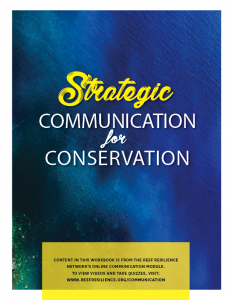Communication Planning Process
What is Strategic Communication?
Strategic communication is the purposeful use of communication to achieve a specific goal or outcome. It is about getting the right message to the right person (or audience) at the right time through the right channel to achieve a goal.
It can be used to:
- Build support for a specific action or policy
- Raise awareness about a specific issue or policy
- Frame and change public policy
- Influence behavior around a specific topic or issue
- Impact public opinion about a specific topic, issue, or policy
- Strengthen relationships with specific audiences
Watch a short presentation about strategic communication and the planning process:
Why Do We Need It?
People are increasingly bombarded with information—too much information to absorb and process, so much of it is simply lost. Recent studies in the U.S., for example, show that an average American is inundated with as many as 30,000 messages a day, and a whopping 5,000 of those are ads. Strategic communication helps us be thoughtful and deliberate in how we communicate, so our messages stand out and reach our audience, rather than become part of this “information clutter.” It also helps us achieve clarity on where we want to go (goal) and focus and control on how to get there, and manage our time and prioritize limited resources.
How Can I Make My Communication Strategic?
To develop a successful communication strategy or plan, a series of strategic decisions need to be made. In this online guide, we will walk through key decisions points, prompting you to ask the right questions that will lead to the right answers for your project. This planning process is based on Spitfire Strategies’ Smart Chart® strategic communications planning tool and a number of other planning tools and resources. (See Resources lists at the bottom of the planning sections.) We summarized this online content, including worksheets and links to videos and resources into a Strategic Communication for Conservation guidebook.
Who is this Guide For?
This guide is intended to help marine resource managers and conservation practitioners with little to no communications training become more effective communicators. Anyone can use this guide – on your own, in a small group with colleagues from your own organization/agency/community group, or with partners. All you need to get started is a project – this can be an idea, mandate, a goal, an initiative, etc. – and time to walk through the planning process. We recommend you set aside at least one full day to write your plan.
For a communications strategy to be most effective, it is helpful to include someone with communications experience on your project team or assigned to support the team.
How Does this Guide Work?
Strategic communication planning starts with clarifying your goal, then moves to defining your audience, developing effective messages, and identifying methods or tactics for delivering those messages to your audience. The final step is measuring the effectiveness of your efforts and making adjustments to your strategy if needed.
For each stage in the planning process, you will be introduced to key concepts and briefly tested to reinforce the information, then you will be able to apply what you learned to your own project through an activity.
Activity worksheets can be easily downloaded so you’re able to type on them directly or print them and write by hand. To complete the worksheets, you’ll need writing and timing devices.
Planning Process Overview
The strategic communication planning process is linear and features seven main steps or decision points, with each step or decision building on the next:
- Establish your goal and objectives
- Assess the context for your efforts
- Identify your target audience(s)
- Make your message(s) matter
- Identify messengers and tactics for communicating your messages
- Measure your impact
- Create a summary of your plan
![]()
This framework helps you advance toward a goal in a structured, thoughtful way. It also allows you to respond to changing circumstances and new information—an essential part of successful communication—and measure the outcomes or impact of your communication.
Test Your Understanding
Test your understanding of the information in this section by taking the quiz.
Go to Step 1: Establish Your Goal and Objectives
